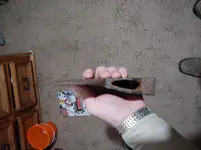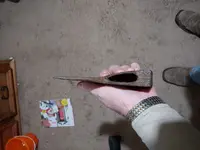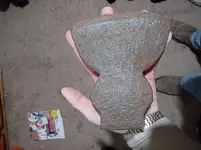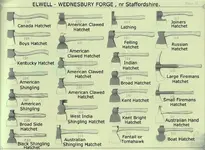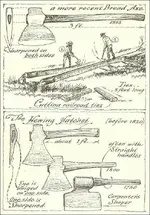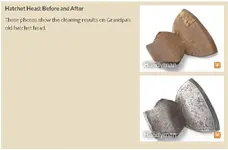I will have to work on cleaning it up thank you guys for your help this is an interesting community glad to be a part of it now
The illustration in the earlier post shows a broad axe sharpened on both sides.
That goes against the original design/use.
The men working the split timber....Shows the one for sure scoring the log from the edge towards the center.
An axe sharpened on both sides suits such a task.
However , to knock off outer slabs between the scored areas to make a square timber...A single edged axe comes in. Thus the broadaxe with a flat side , and the other side with a generous bevel comes into play. That means , two differently designed axes for particular uses were /should be used.
Your pic shows a standard (early design) single edge with a big bevel.
IF the other side of your axe from the one pictured is simply flat...You have the broadaxe to make squared (or how ever many flat sides are desired on a timber) timbers with.
If you have a single beveled broadaxe , a curved handle is preferred. To avoid busting your knuckles on the timber as you knock off the slabs between the scores hewed to the depth of what is to become your desired timbers edge. (Watch your feet!)
Congrats on your axe!
A tool used and valued by it's previous owner(s). Craftsmanship in it's manufacture ,and use.
